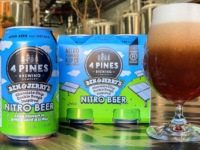
Bars and restaurants may have been shut down due to the coronavirus outbreak, but expired beer did not go to waste. South Australia Water’s Glenelg Wastewater Treatment Plant has found a way to put unused ale to good use by boosting renewable energy.
The expired beers from local South Australian breweries can power the plant with up to 654 megawatt hours per month. They are now using it on “treatment processes, reducing wastage and benefiting the environment”.
“Our Glenelg Wastewater Treatment Plant has always been a strong performer in generating its own energy from biogas and the addition of ales and lagers took it to new heights amid the shutdown,” said SA Water senior manager production and treatment Lisa Hannant.
“Glenelg’s co-digestion program adds high strength organic waste from industry to sludge from the sewage treatment process, which is heated in the oxygen-free environment of the large sealed concrete digester tanks so it breaks down through natural bacterial metabolic processes and releases biogas.”.
She said the biogas harnessed on site is a sustainable alternative to industrial waste that is usually hard to get rid of. Hannant said the 150,000 litres of expired beer per week produced 355,200 cubic metres of biogas in May and 320,000 cubic metres in June. That is enough to power 1,200 houses.
“Many businesses have been impacted by the restrictions in place to stop the spread of Covid-19 and this is just one example of how industry has remained resilient and adapted to ensure their resources aren’t wasted, while enabling an outcome for the environment,” added Hannant.
Before the pandemic, digesters usually generated enough biogas to create 80 per cent of the Glenelg facility’s energy requirements.
















